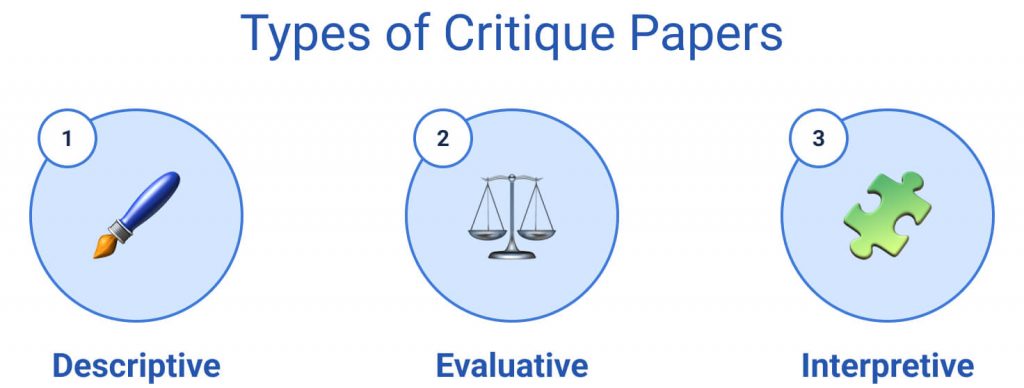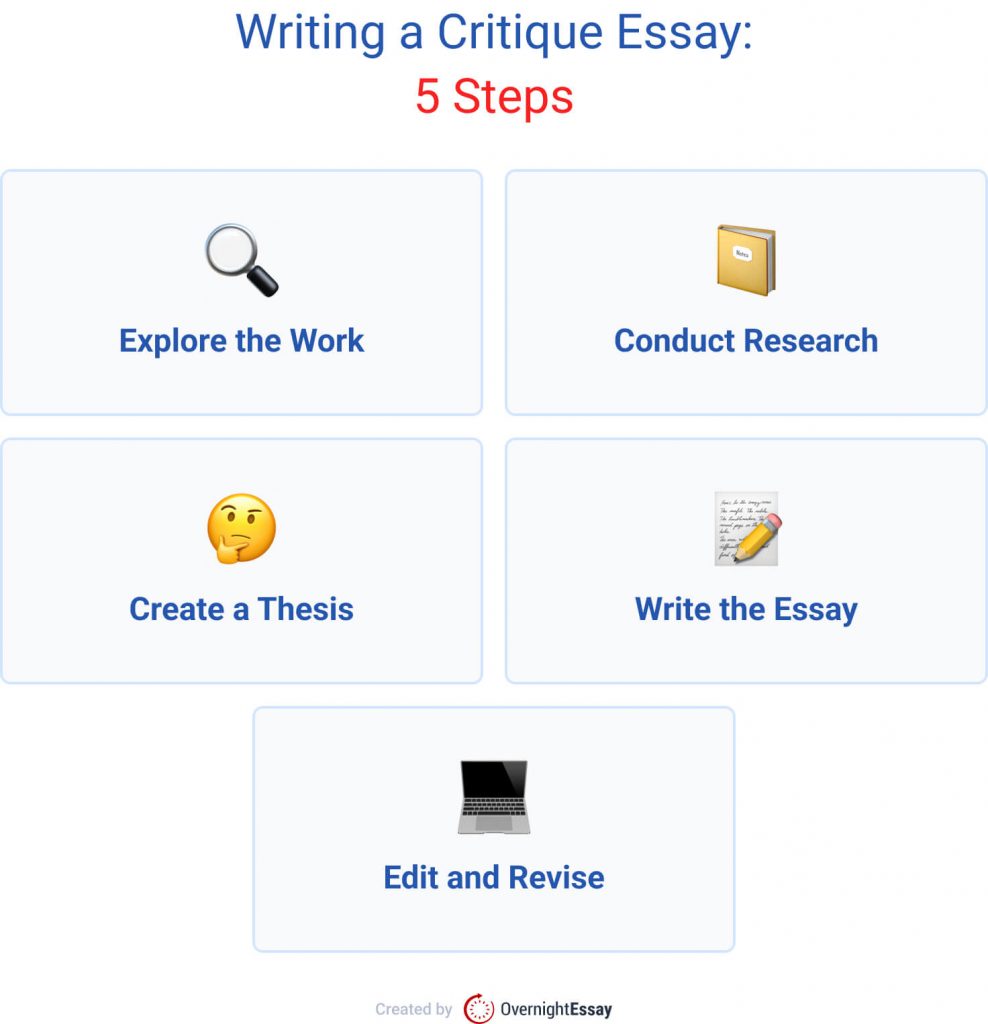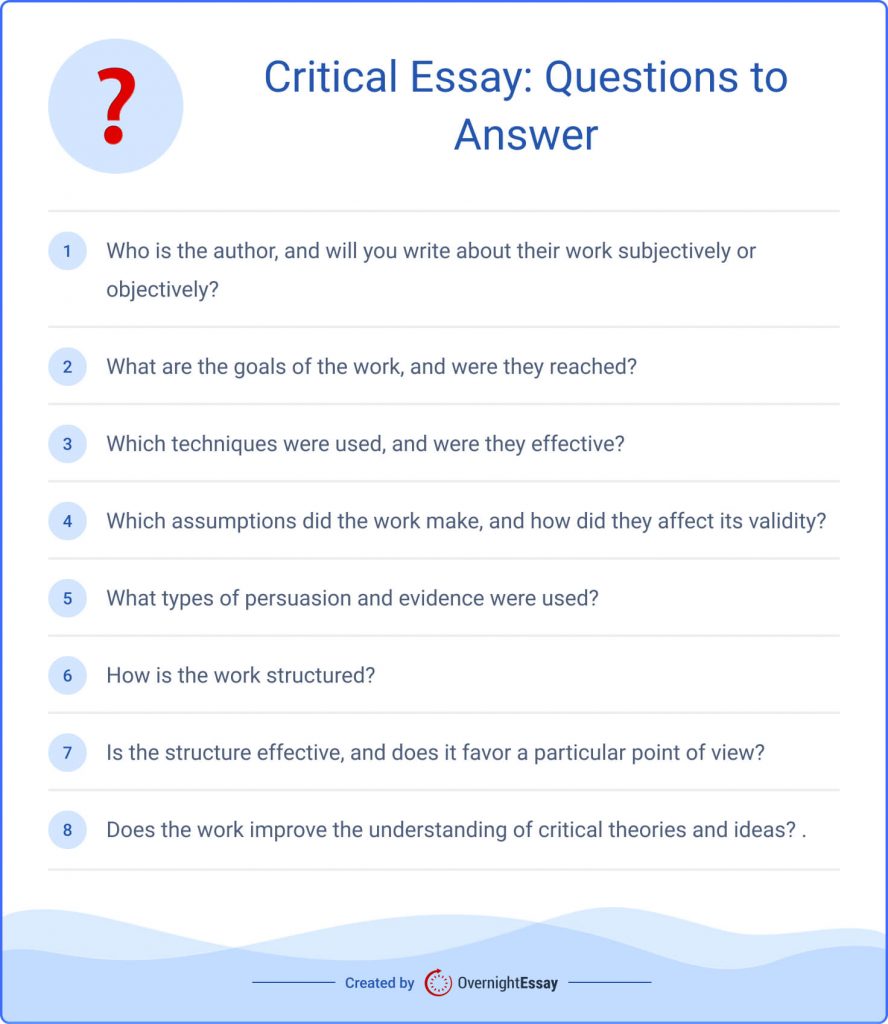Critical thinking is an essential life skill taught in academia. Critique essays help us develop this skill. However, it’s challenging to figure out how to write one independently. Our team has created this comprehensive guide to teach you how to express opinions in an academically correct manner. Here, you’ll discover step-by-step guidelines to help you write an essay. We’ve also addressed the proper essay critique format structure and provided several practical examples of how it should look. So, if you are interested and wish to learn more, start reading ASAP!
📃 What Is a Critique Paper?
A critique paper is a piece of writing that provides an in-depth analysis of another work. These include books, poems, articles, songs, movies, works of art, or podcast episodes. Aside from these, a critique may also cover arguments, concepts, and artistic performances. For example, a student may evaluate a book they’ve read or the merit of the First Amendment.
In a critique essay, one addresses the subject of the analysis, its source, intent, and purpose, in addition to its structure and content. You may present your own opinion on the analyzed work or include alternative points of view. Your paper can consist of an interpretation of what a piece of work means and an assessment of its worth.
🔍 Discover All Critique Essay Types
Now, we will detail everything you need to know about the main types of critique papers. Use the table below to determine which one will suit your essay best.

🥇 19 Best Critique Essay Topics
This segment has some of the best topics for critical essays that you can use in your assignments. Make sure to look through them and find some inspiration! Some of them are sure to catch your attention.
- Analyze the effectiveness of the justice system in curbing drug use.
- Why are people reluctant to change their views on the Second Amendment?
- Critical review of the moral lessons in contemporary young adult novels.
- Is critical thinking still relevant in the modern world?
- Analyze the health effects of fast food on the human body.
- Describe the effects of racism on underrepresented groups.
- Build a case for the causes of the homeless crisis in the US.
- Unraveling motivational factors: a critique of psychological theories in the workplace.
- Analyze the shifting of gender roles in modern society.
- What is the impact of corruption on the economy?
- The impact of setting and atmosphere on the reader’s experience of a book.
- Investigate the role of mass media in decreasing racial tension in the US.
- Analyze the use of symbolism and imagery in Edgar Allan Poe’s short stories.
- Ethical dilemmas in medical study: critical analysis of journal articles on human trials.
- Which themes are the most common in current TV shows?
- Explain how fashion choices impact one’s identity.
- Build a case for a free higher education.
- What are the effects of social media on human communication?
- From page to screen: A comparative critique of the book and movie versions of The Lord of the Rings.
🗝 How to Write a Critique Paper: 5 Key Steps
We recognize that tackling a critique paper without proper guidance can be time-consuming and daunting. That’s why we have outlined the steps you should take to make a detailed plan for your future essay. These five steps will guide you in analyzing work successfully and creating quality papers.

- Explore the work. Before writing your essay, carefully examine the text you will be critiquing. Take notes relevant to your paper’s topic along the way. Pay attention to details and try noting the strengths and weaknesses of a piece of work.
- Conduct research. Aside from inspecting the work itself, you should also thoroughly study the surrounding context. Learn everything relevant about its author, background, and cultural and historical factors. So, you will receive essential information about the research subject, allowing you to understand it better.
- Create a thesis statement. This part usually includes a concise summary of the analysis of the work and conducted research. Students must carefully write their thesis statements to present their main argument or the work’s brief evaluation.
- Write the critical paper. After you have composed a solid thesis statement, it’s time to write your essay. Begin by providing background data in the introductory paragraph. Follow with analysis and evidence that supports the paper’s intent. Finish with a conclusion that gives a summary of the key points and reinforcing the thesis statement.
- Edit and revise to perfection. When you have the first draft, carefully review and edit its segments. See if the paper is structurally sound, easy to follow, and has a coherent format. Good writing provides its arguments logically, with clear connections between evidence and analysis. Pay close attention to segments that make you stumble and reread all sentences twice.
📝 Critique Paper Format & Structure
Before attempting to write your critique essay, you should familiarize yourself with its structure and form. We’ll examine each part in-depth and describe which elements they should have. It will give you an idea of how to structure your essay correctly.
Examining each component is essential after you get acquainted with the basic structure of a critique paper. We have detailed for you below.
Critique Essay: Introduction
You probably already know how essential the introduction is in a critique paper. This is why it’s vital to understand its proper structure. One should consider all elements that must be present in this part of the paper.
- Provide the name of the critiqued work, when it was first published, and by whom.
- Describe the thesis statement or the main idea of the paper.
- Give the context of the work, political or social, and its importance in a discipline or an academic field.
- Finish with a sentence that briefly evaluates the examined work and transitions into the main body.
Critique Essay: Main Body
We’ve finally arrived at the analysis, the most crucial part of creating a critique. Here, we’ll look at the structure of the main body paragraphs. This part of the article will explain what to include in your critical paper.
The body starts with a summary that explains:
- The main points of the work.
- How the points were achieved through characters, symbols, and various techniques.
- The aim of the research, how it was conducted, and based on what.
The rest of the body is a detailed critical evaluation of the work that includes:
- A systematic and thorough approach to assessing different elements.
- An assessment of the author’s ability or lack thereof to achieve their goals with these components.
- Supporting evidence for your arguments and evaluation.

Critique Essay: Conclusion
Lastly, let’s consider the conclusion of your critique paper. It is the time to summarize and reiterate what you have discussed in your work. An essay conclusion should contain the following elements:
- A concise statement that summarizes the entire work.
- A rundown of key points identified and covered in the evaluation.
- If necessary, the conclusion may provide recommendations for others interested in getting acquainted with the work.
🏆 Great Critique Paper Examples
Critique of an Adidas Promotional Strategy.
Adidas of one of the world’s most fabulous clothes, shoes, and equipment producers.The corporation registers hundreds of patterns on new tech for its products every year. But this doesn’t mean that Adidas does everything right. This paper demonstrates yhe unethical practices the company uses in its advertising campaigns.
We are confident that our tips and instructions will make it easier for you to achieve great results. Besides, you can try our helpful essay topic maker to come up with writing ideas! Consider forwarding this article to your friends who may be looking for a quality guide on critical papers.